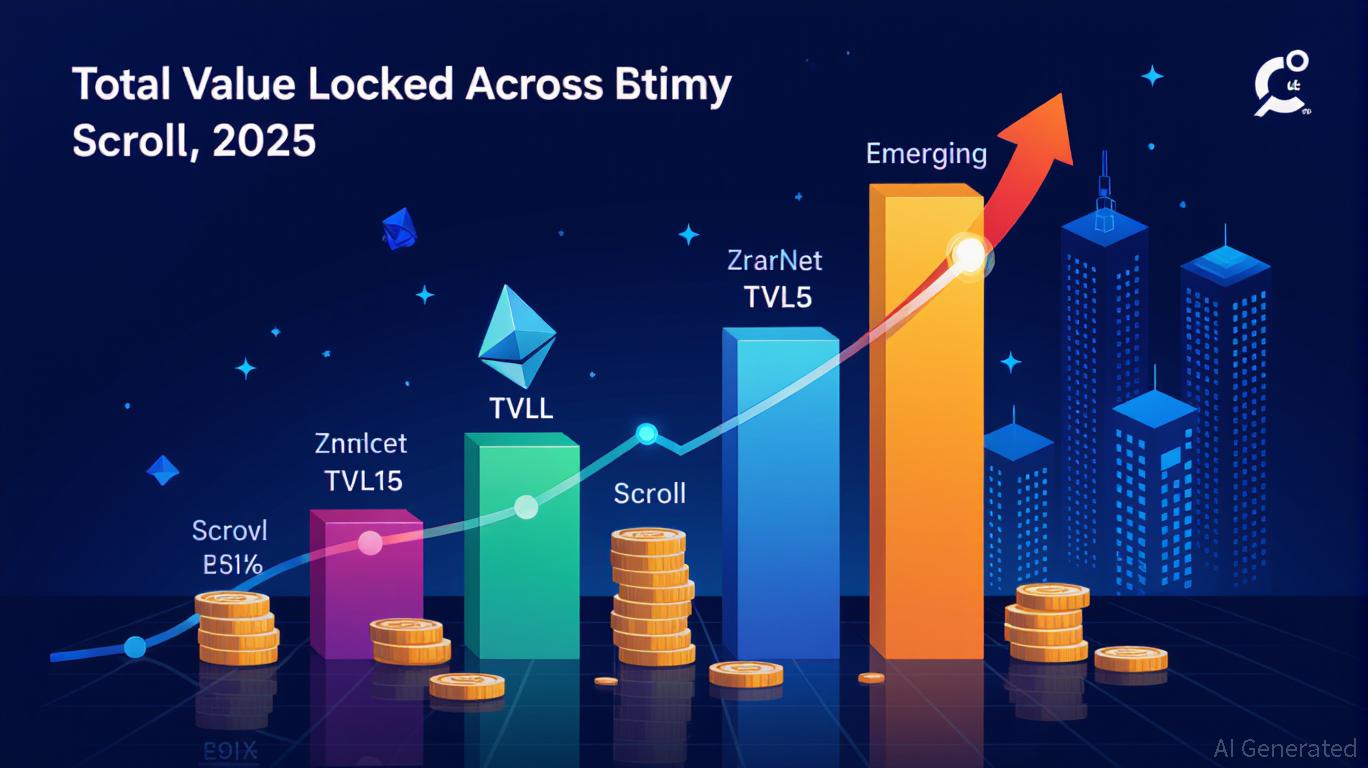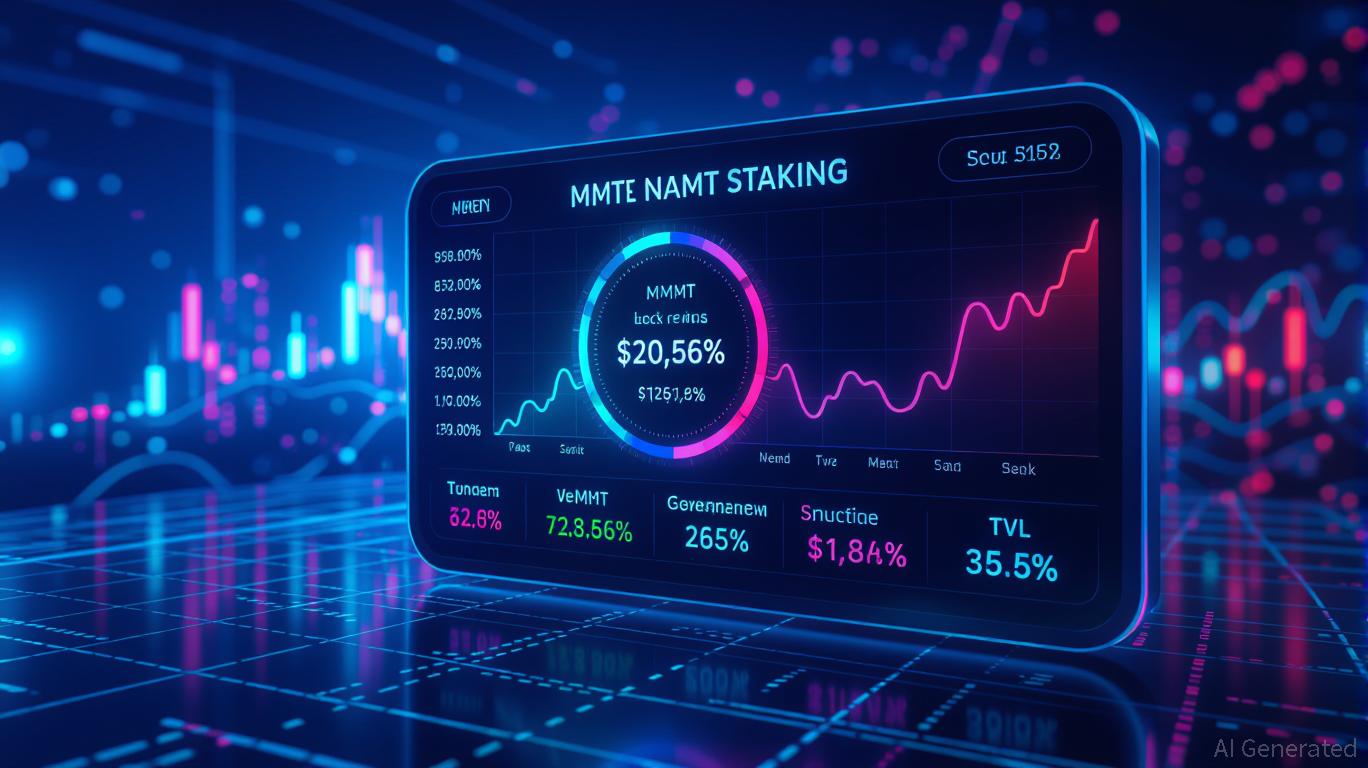Vitalik Buterin's Progress in Zero-Knowledge Technology and the Investment Opportunities within Ethereum's Layer-2 Ecosystem
- Vitalik Buterin prioritizes ZK technologies to optimize Ethereum's post-Merge scalability, targeting modexp precompile replacement for 50% faster ZK-proof generation. - ZKsync's Atlas upgrade enables 15,000+ TPS and near-zero fees by redefining L1-L2 liquidity, positioning ZK-based L2s as Ethereum's infrastructure backbone. - Dencun's "blob" data slashes L2 costs by 98%, driving Base and Arbitrum to surpass Ethereum's base layer in transaction volume and user adoption. - ZK L2s like ZKsync and StarkNet s
Technical Foundations: Vitalik’s ZK-Centric Vision
Vitalik Buterin has pointed out that the modexp precompile, an older feature used for modular exponentiation, is a major obstacle for scaling ZK-EVMs. Transitioning this function to standard EVM bytecode could cut ZK-proof creation times by as much as half, while also streamlining the
At the same time, Buterin has spotlighted ZKsync’s Atlas upgrade as a model for L2 scalability. This update achieves over 15,000 transactions per second (TPS), one-second finality, and minimal fees by transforming the liquidity dynamics between L1 and L2, as outlined in a

Market Dynamics: ZK L2s as Growth Drivers After the Merge
The Dencun upgrade to Ethereum in March 2024 further boosted the economic case for ZK L2s by introducing “blob” data, which cut L2 data posting expenses by 90–98%, as reported in a
From a financial perspective, ZK L2s are evolving into independent ecosystems. ZKsync’s revamped tokenomics, for instance, links the value of its ZK token to network earnings through mechanisms like buybacks and burns, creating a deflationary effect, as explained in a
Project Comparisons: ZKsync, StarkNet, and Scroll
During the third quarter of 2025, ZKsync’s Atlas upgrade showcased performance at an enterprise level, with its sequencer reaching 43,000 TPS and Airbender enabling transfers at just $0.0001 each, according to a
Investment Implications
The combination of technical breakthroughs and economic models in ZK L2s points to strong long-term prospects. For Ethereum, expanding L2 adoption could increase overall fees and boost ETH’s value, as L2 activity enhances the network’s usefulness. Still, issues like modexp inefficiencies and rivalry among L2s require careful consideration. Investors should focus on projects with transparent tokenomics, solid enterprise collaborations, and clear technical advantages—ZKsync’s Atlas and StarkNet’s Grinta are prime examples.

Conclusion
Vitalik Buterin’s advancements in ZK technology, along with the progress of L2 solutions like
Disclaimer: The content of this article solely reflects the author's opinion and does not represent the platform in any capacity. This article is not intended to serve as a reference for making investment decisions.
You may also like
Bitcoin soars past $105K after Trump’s $2,000 tariff payout promise ignites crypto rally

MMT Token Value Soars: Governance Enhancements and DeFi Drivers in 2025
- MMT token surged in late 2025 due to ve(3,3) governance upgrades and DeFi adoption growth. - Binance's 0.75% genesis airdrop boosted community engagement and institutional validation. - TVL exceeded $600M with 2.1M users, driven by cross-chain integrations and fee-sharing incentives. - Inflationary token unlock risks (79.59% supply over 48 months) balance against Q1 2026 perpetual DEX launch. - Momentum's RWA platform and Sui-Ethereum bridging position it as a DeFi governance hub with sticky capital pote

MMT Token TGE and Its Influence on the Market: Evaluating Practical Use and Adoption Prospects Amid Market Volatility
- MMT token's November 2025 TGE triggered a 1330% price surge and attracted institutional investment. - Listings on Binance/Upbit and $10M funding from Coinbase Ventures amplified liquidity and market credibility. - Speculative trading dominates growth, with TVL at $265M but limited real-world utility beyond DeFi staking. - Phishing risks and reliance on exchange incentives highlight adoption challenges despite institutional backing. - Future viability depends on ve(3,3) DEX launch and RWA integrations to

Decentralized Finance's New Era: Examining TWT's Growth Following Its Addition to Exchanges
- Trust Wallet Token (TWT) shifted from exchange integrations to a loyalty-driven ecosystem via Trust Premium, linking token utility to user engagement tiers (Bronze-Gold). - TWT's price stabilized post-launch, with analysts projecting a $5.13 peak in 2025, driven by cross-chain utility and tiered incentives for long-term holdings. - The model redefines DeFi tokens as functional ecosystem components, prioritizing user retention over speculative trading, aligning with trends like tokenized real-world assets
